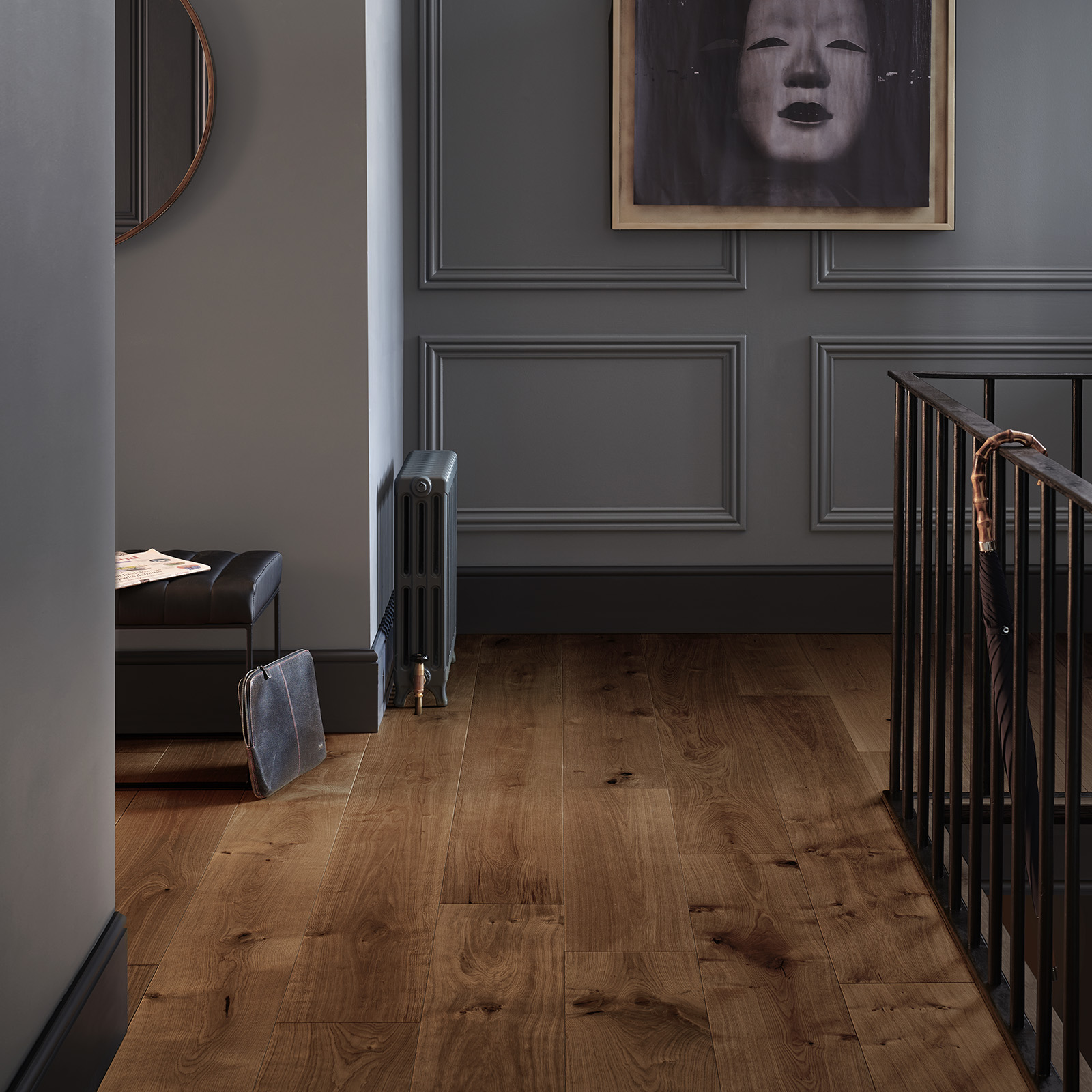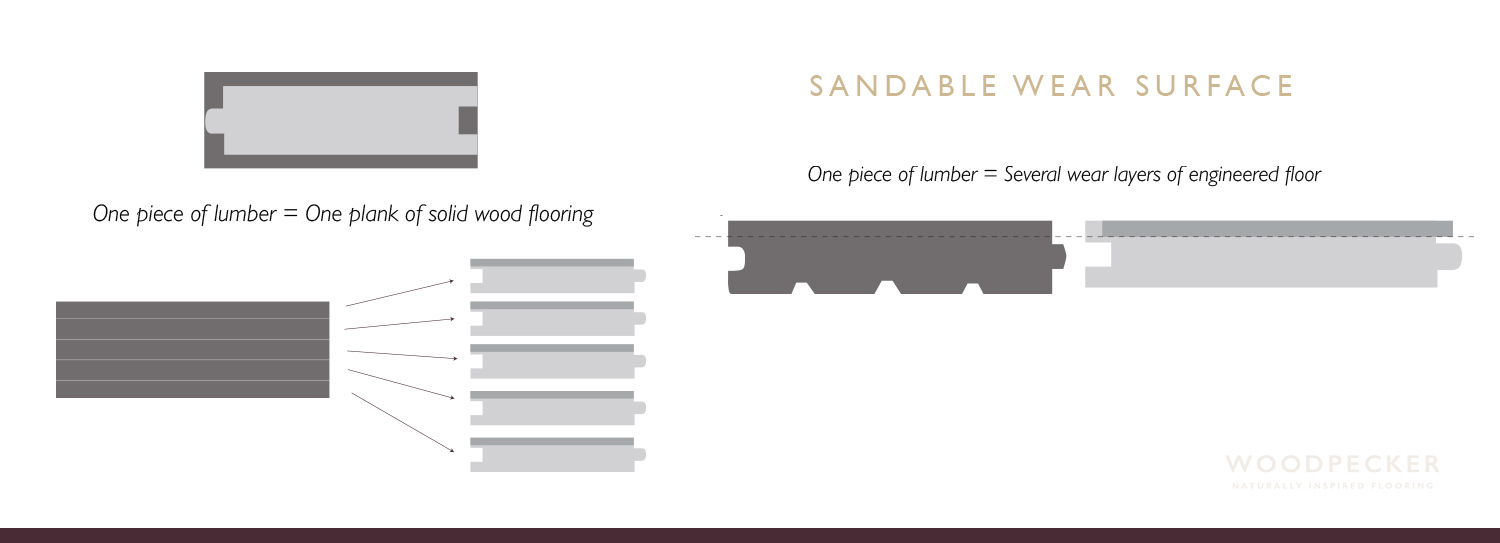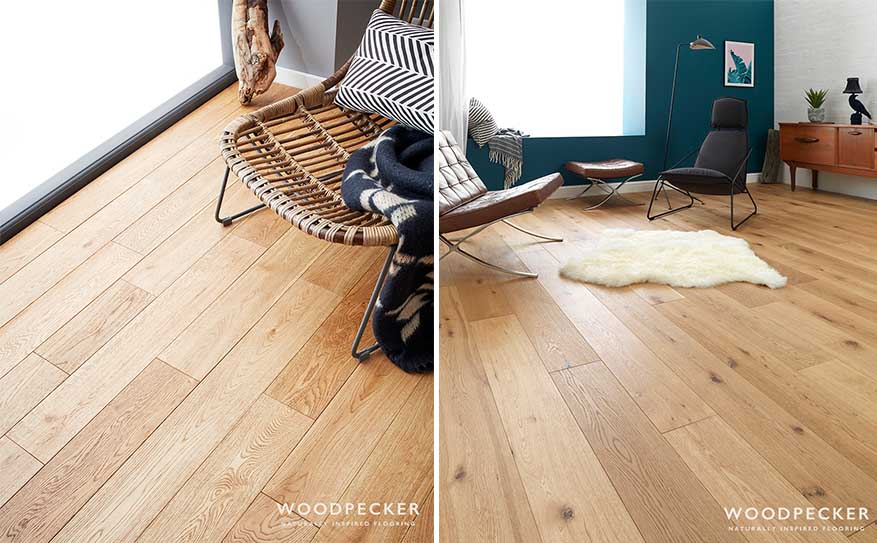Solid Hardwood Flooring vs Engineered Hardwood flooring

Replacing your flooring is a huge investment. Deciding what material to use is not only overwhelming but can be confusing. If you are reading this, it’s highly likely you are debating whether to use engineered hardwood floor or solid hardwood floor. Let’s explore the differences of both products so you can make the best decision for you and your family.
Is engineered fake?
One of the questions we often get from homeowners is “Is engineered hardwood flooring fake wood?” The answer is: definitely not!

Both floors look similar to the naked eye but the construction is very different. As the image above explains, solid wood flooring is made from one piece of solid lumber. This floor can last a century or more, as it can be refinished multiple times. On the other hand, from a solid piece of wood, multiple engineered boards can be made. The core of an engineered hardwood floor can be either plywood or recycled wood, and this is one of the factors that determine the final price.

One of the most important features of solid hardwood flooring is that, normally, the planks are shorter and thinner in width compared to engineered. The reason for this is stability. The longer and wider a solid plank is, the less stable it is.
Engineered hardwood flooring comes in many forms. Planks vary in size from small parquet and herringbone to 12” wide and 10’ long boards. More common sizes are about 7 ½” wide and 7” in length.
It’s all a matter of preference, if you want to achieve a more contemporary look, a wider and longer plank is what you want to focus on.
Durability.

There are the two sides of the coin aspect here. Some people affirm solid hardwood flooring is more durable because it can be refinished multiple times, however, it all depends on what engineered flooring you are comparing it to.
Engineered flooring comes in multiple wear layer thicknesses from 1.5mm to 6mm.
- A 1.5mm wear layer is typically a replaceable floor. After this floor is installed, it can’t be refinished. If the floor gets damaged, it will need to be replaced.
- A 3mm wear layer can usually be refinished once but the flooring contractor would have to be careful. Our Salcombe collection is the perfect place to learn more.
- A 4mm wear layer can typically be refinished up to two times during the lifespan of the floor. If you are feeling adventurous, our Goodrich collection has some beautiful parquet. For planks, the Berkeley and Harlech collection are always up to the task of transforming your space.
- A 6mm wear layer can be refinished as many times as a solid floor. Find your new favorite in our Chepstow Collection.
To break it down in terms of durability, if you compare a solid wood floor with a 6mm wear layer engineered wood floor, the conclusion is that they are both equally durable.
Stability

Wood is a natural material that is very susceptible to temperature and humidity. In this case, solid hardwood flooring tends to expand and contract more easily to changes in temperature, while engineered is more stable and has a better resistance to it.
Due to the reason explained above, solid hardwood flooring is not recommended for underfloor heating while engineered is. Therefore, if you are planning to use an in-floor heating system, it would be recommended that you consider an engineered hardwood floor over a solid.
Cost

Comparing pre-finished quality engineered hardwood flooring and pre-finished solid flooring, engineered tends to be more expensive. However, there are several factors to consider, among them grade, wear layer, pre-finished vs unfinished, wood species and width. It is best to narrow down your requirements, then your favorites and finally what fits your budget.
We hope this information has helped you make your decision. However, if you still have questions please reach out and contact us. We will be happy to help you. We offer complimentary samples so you can see and feel our exquisite product in real life before you make your final decision.

